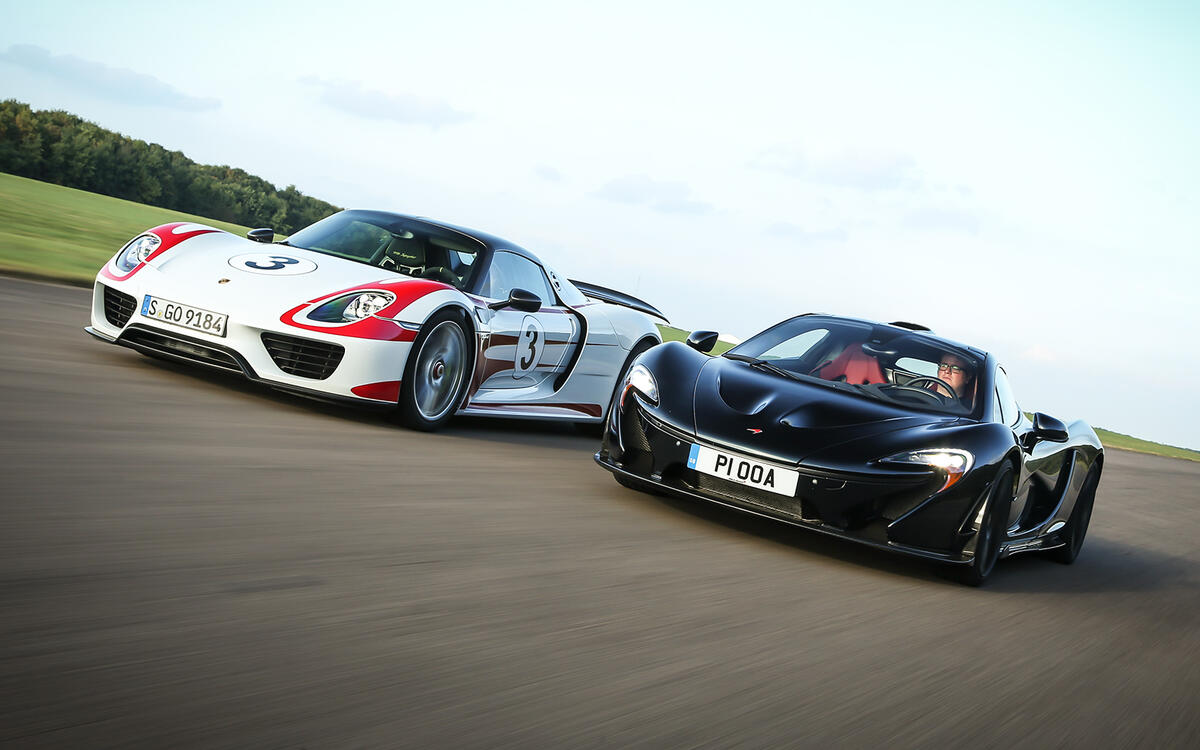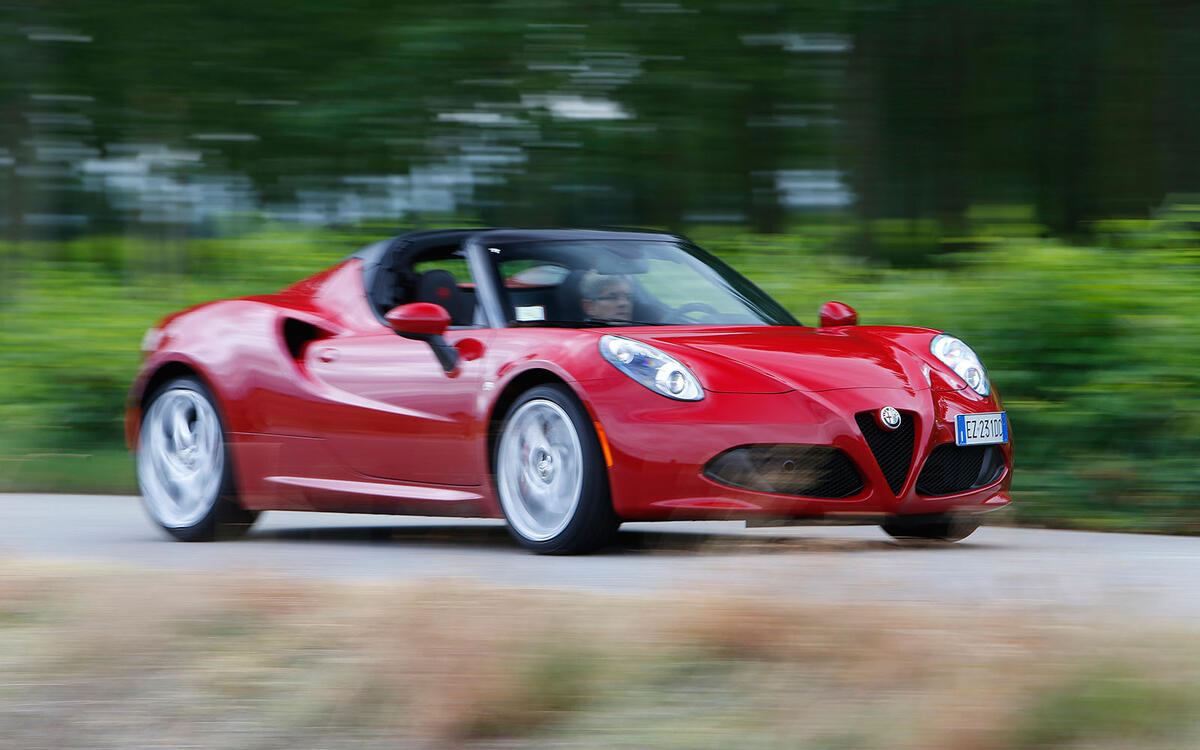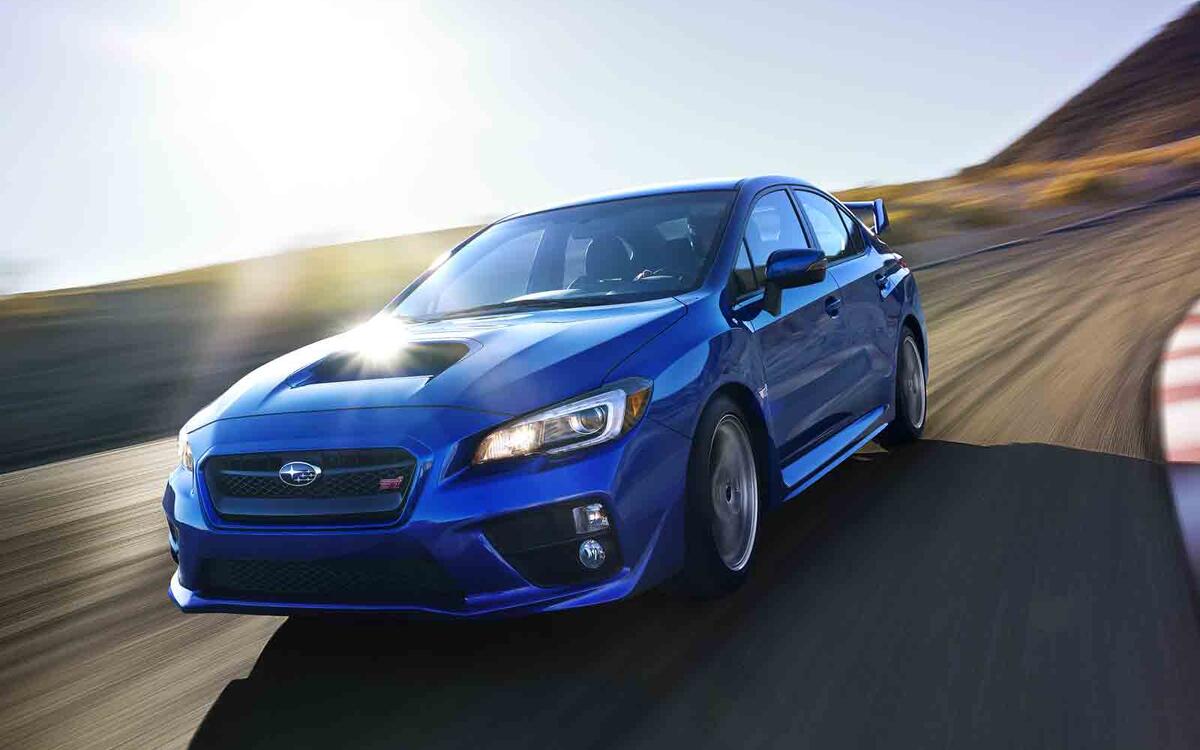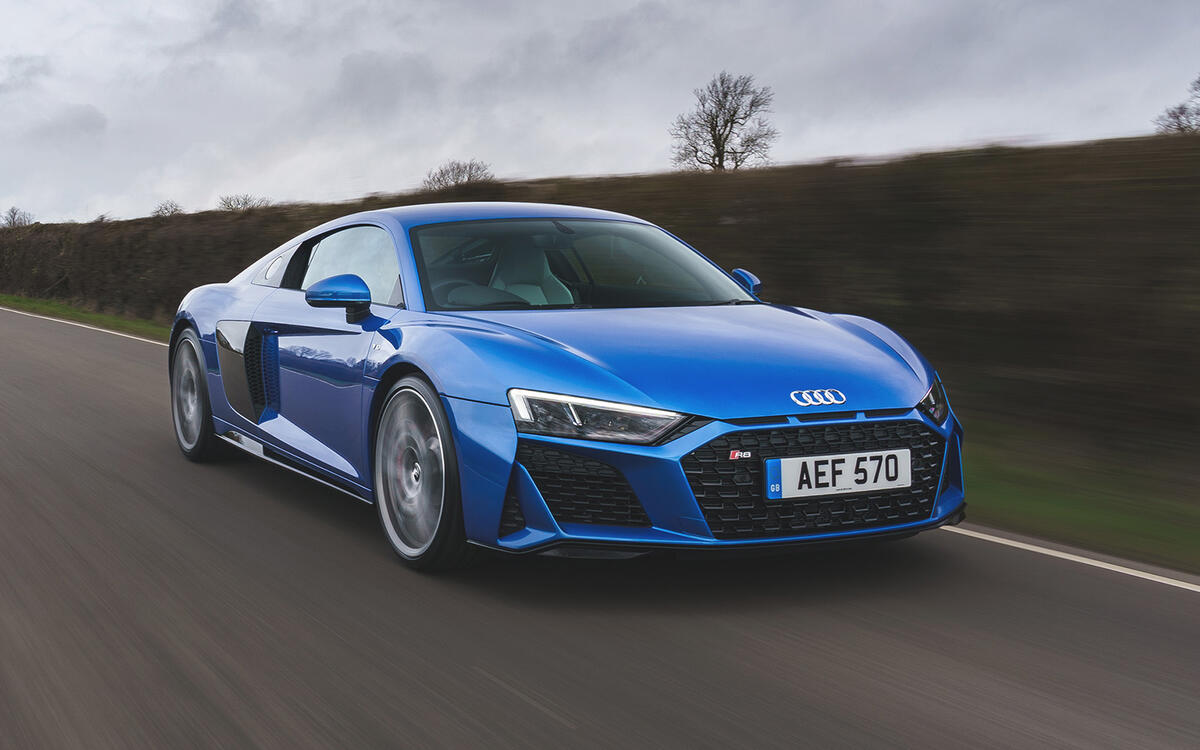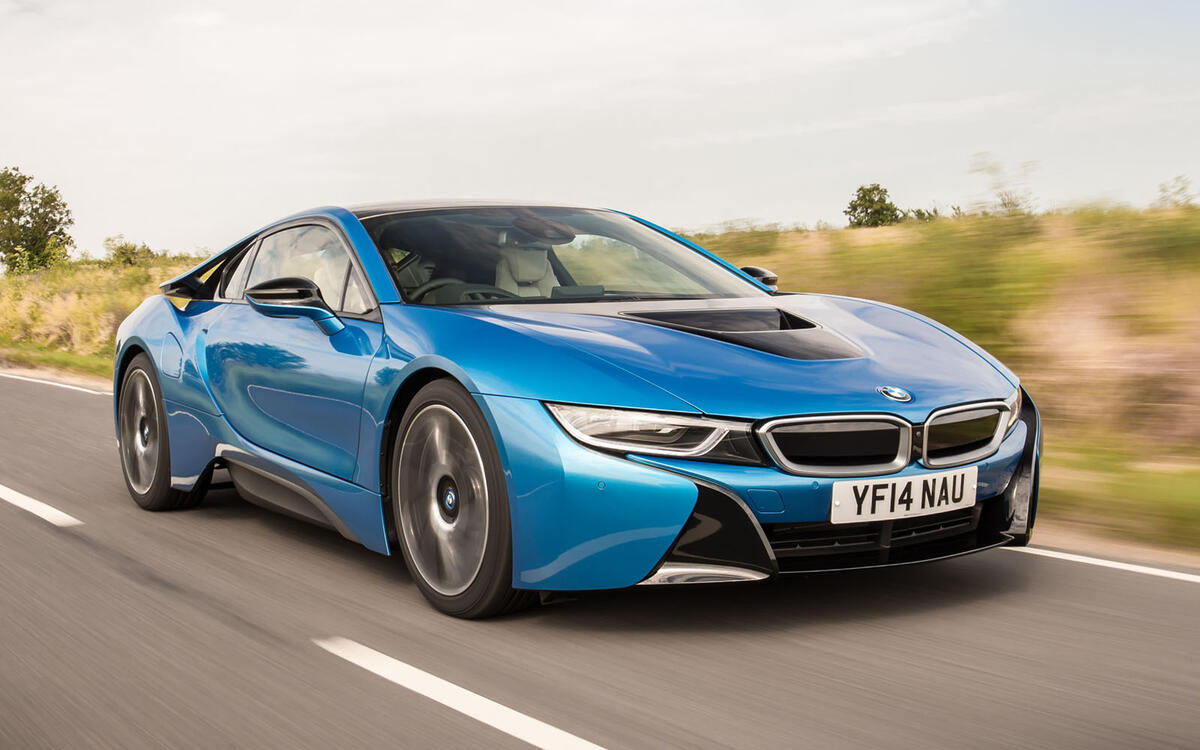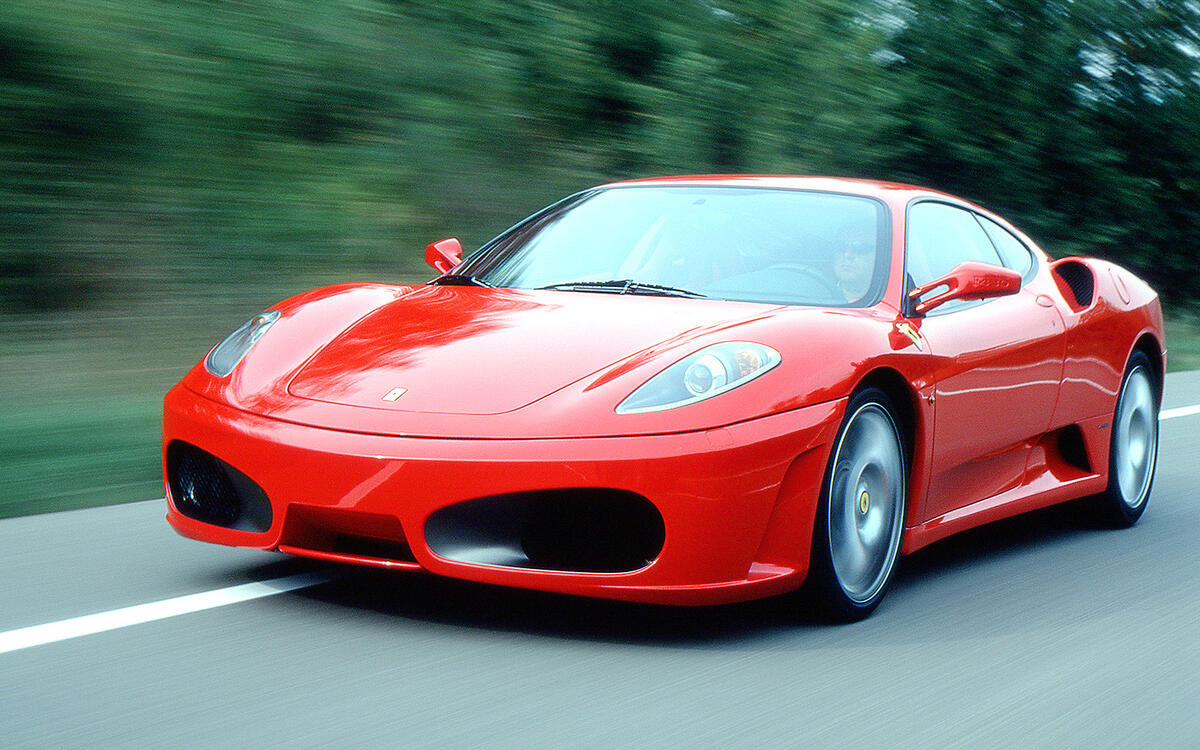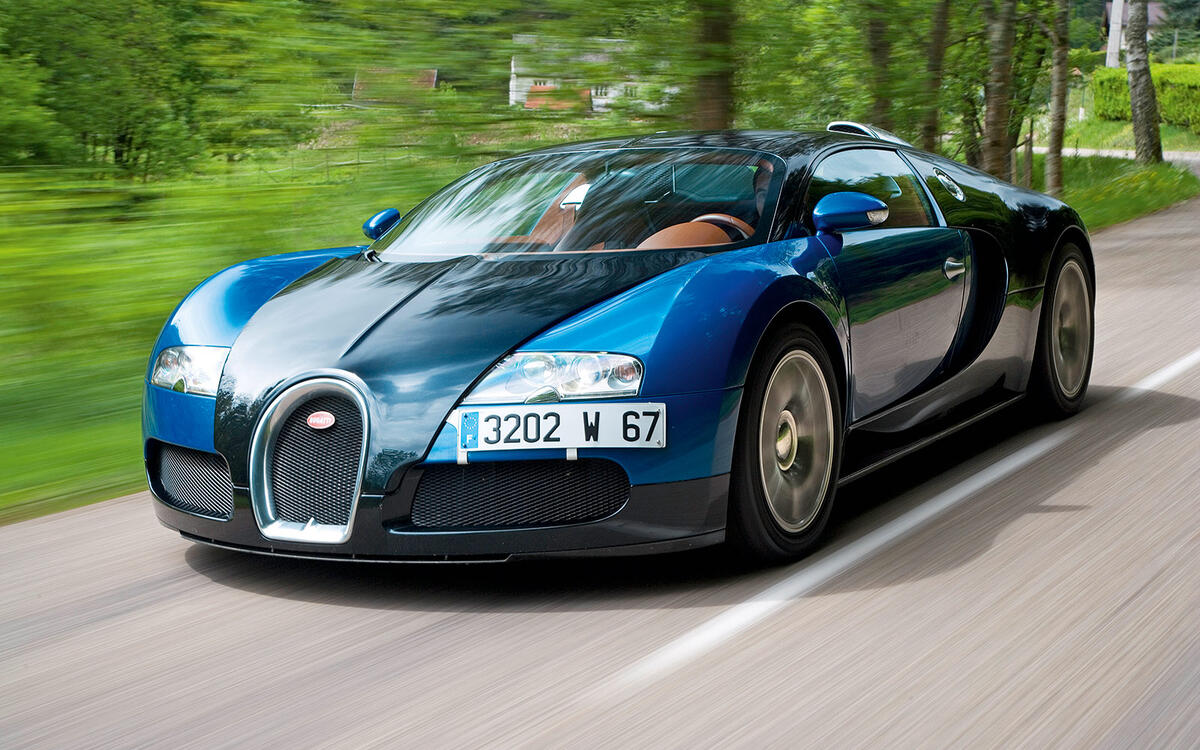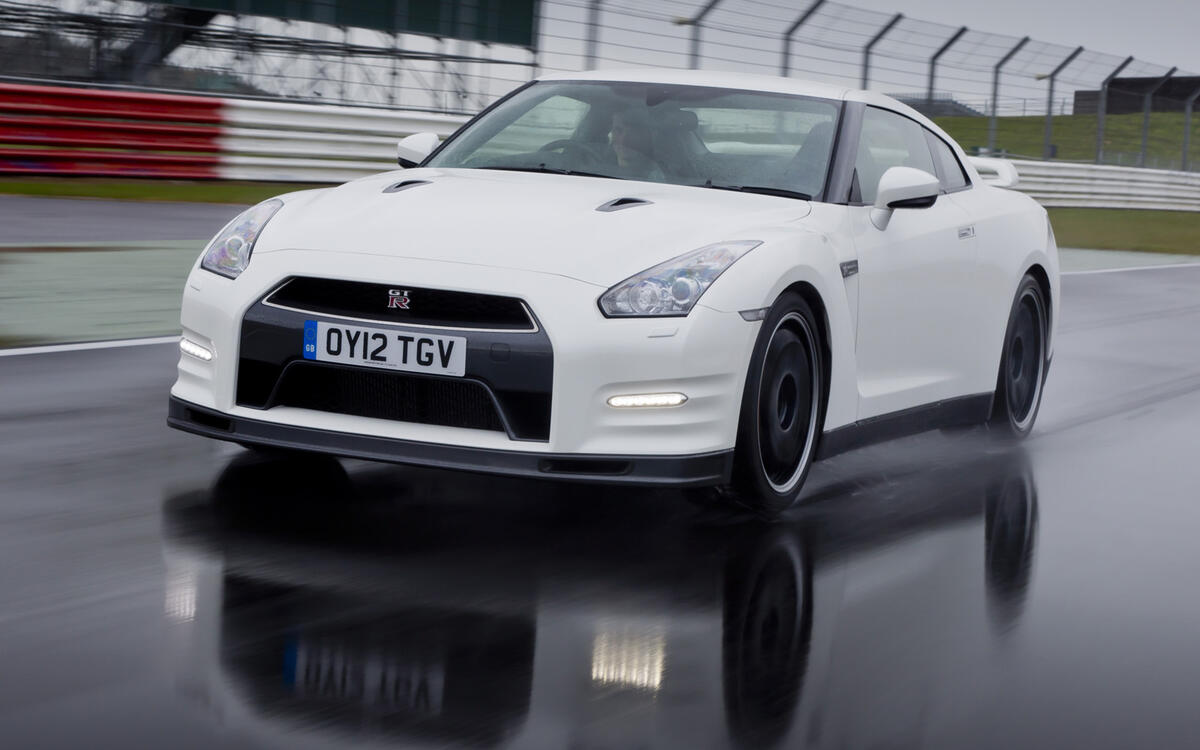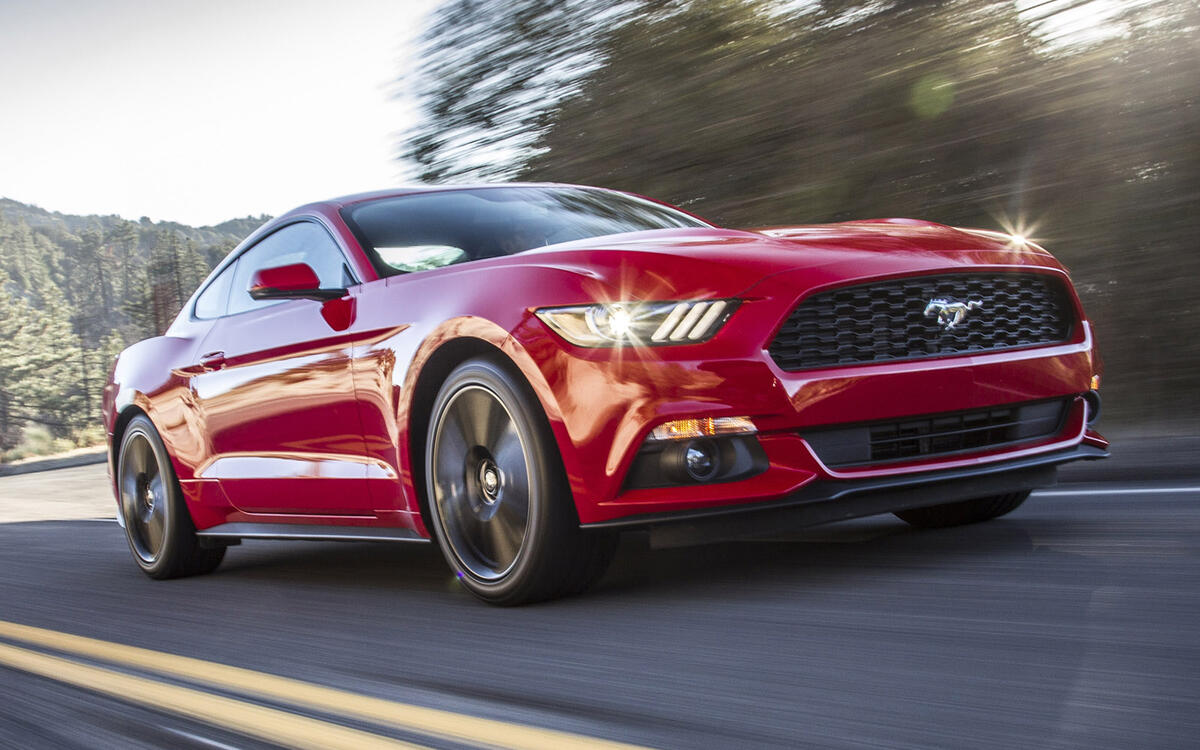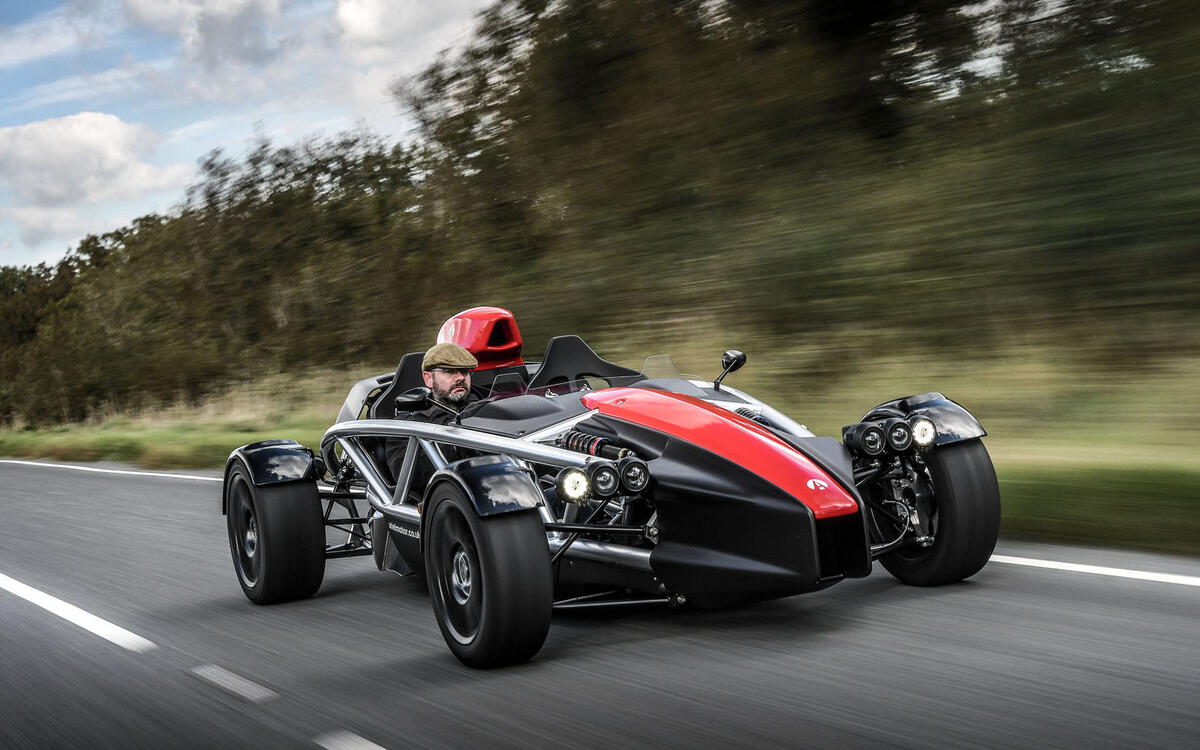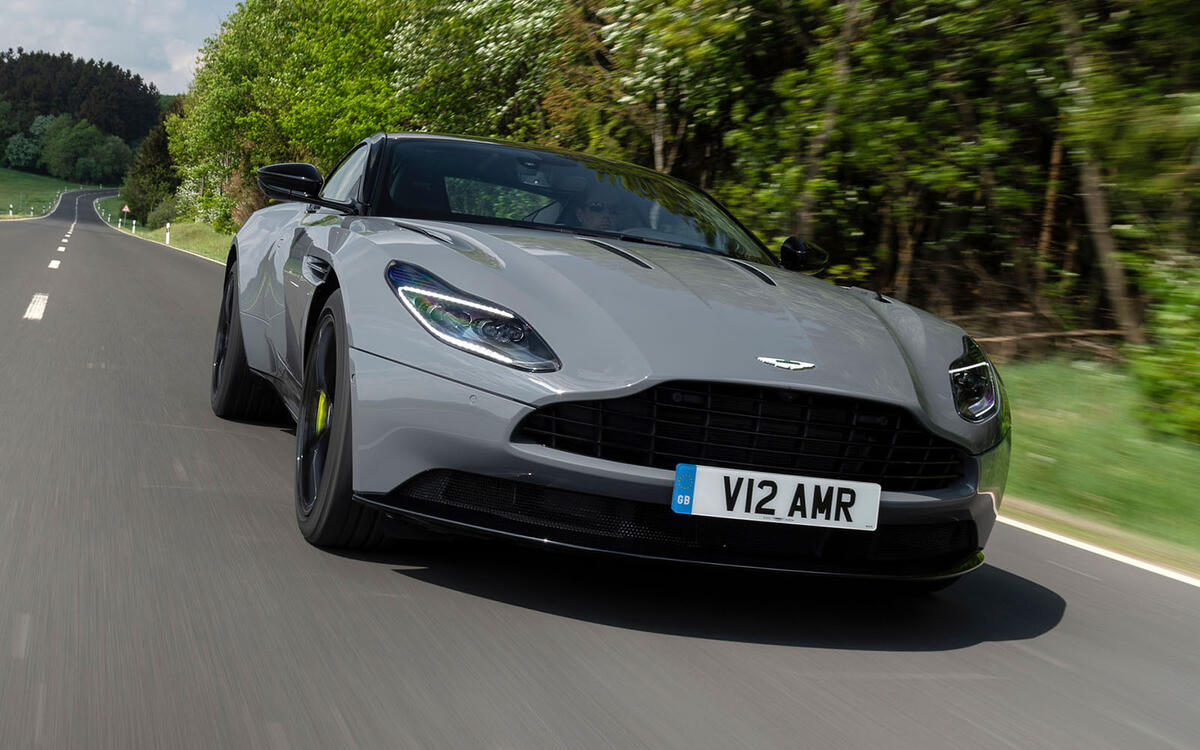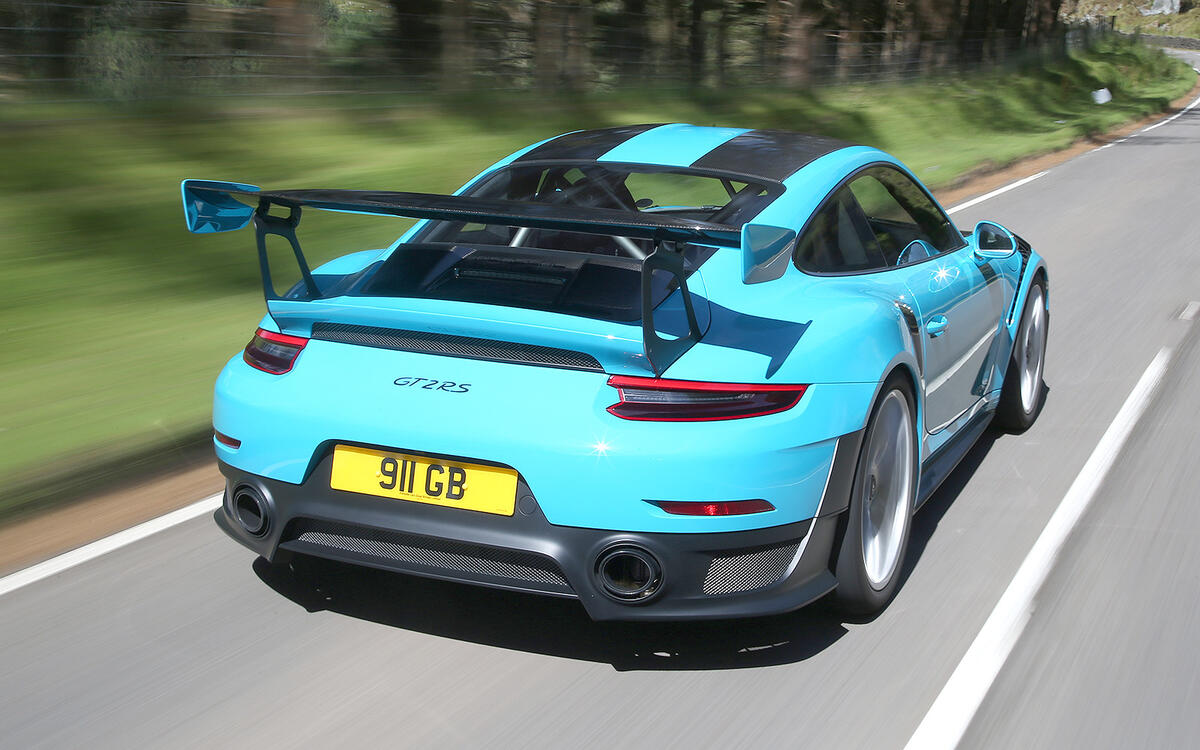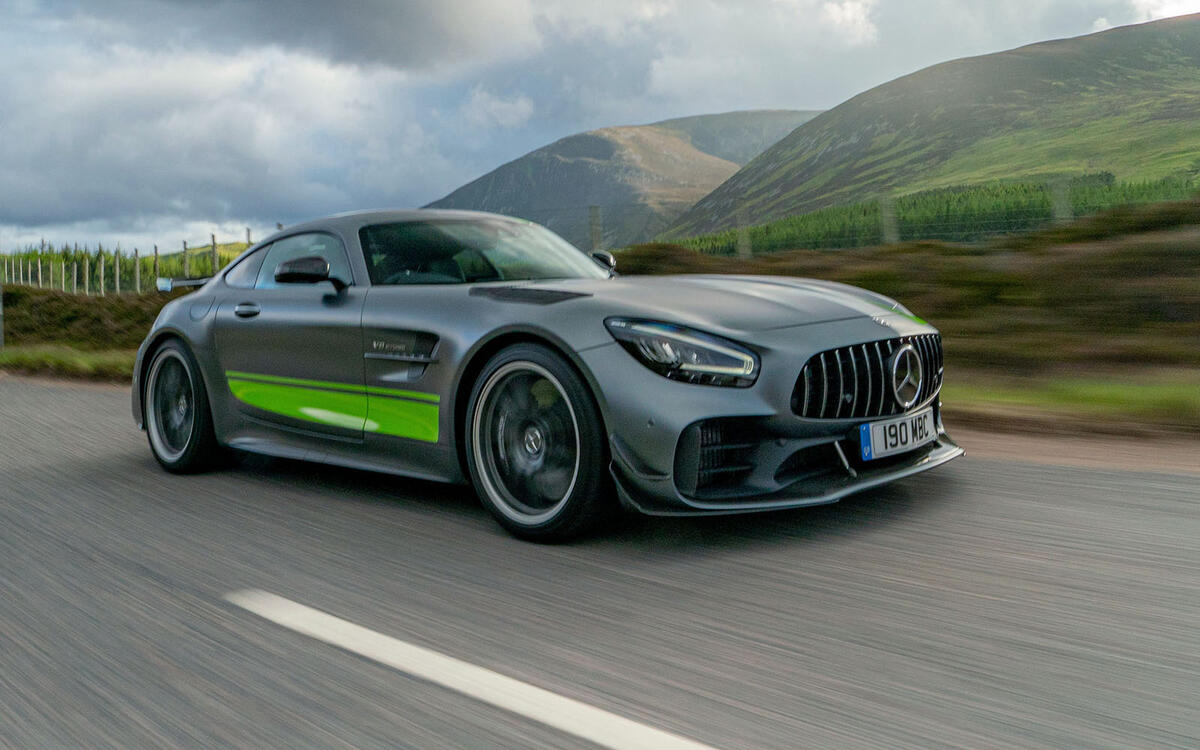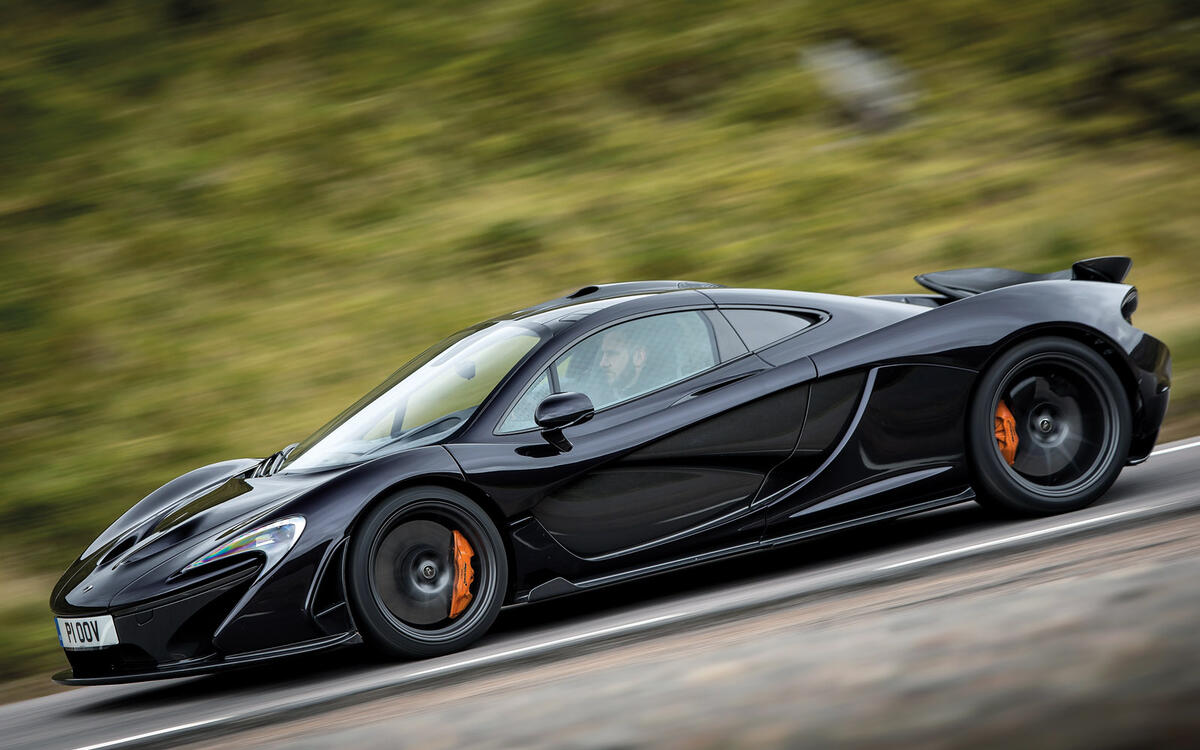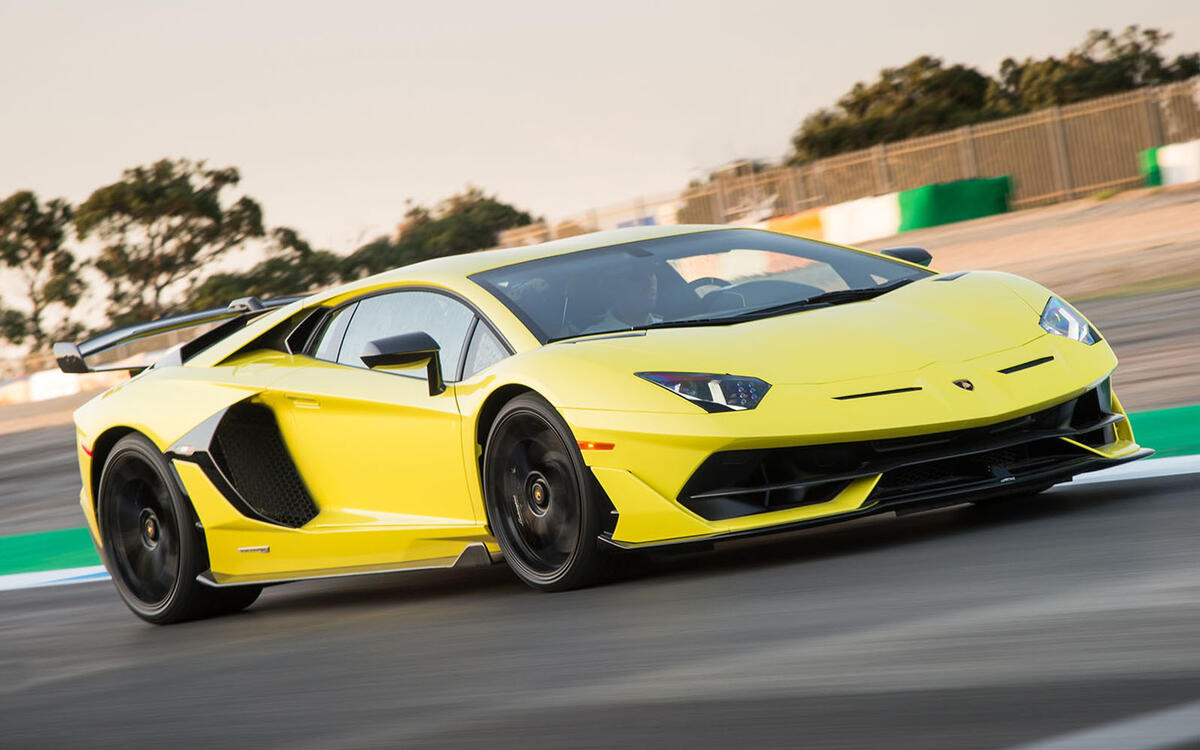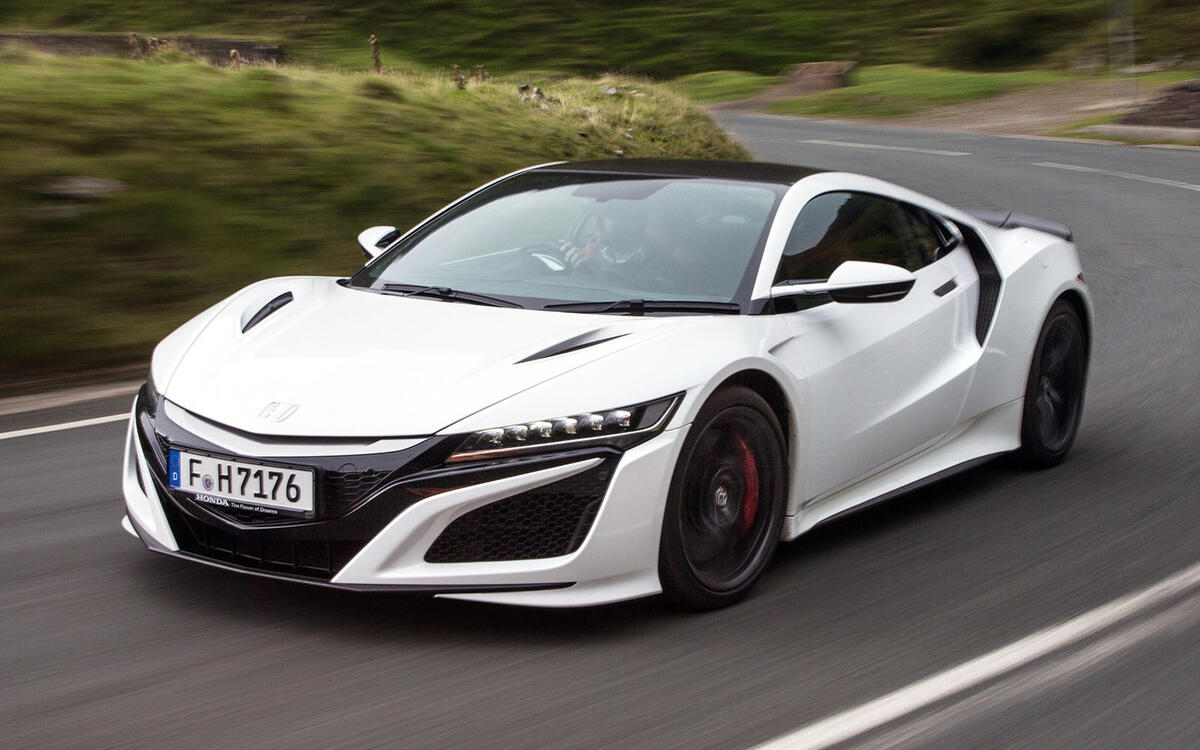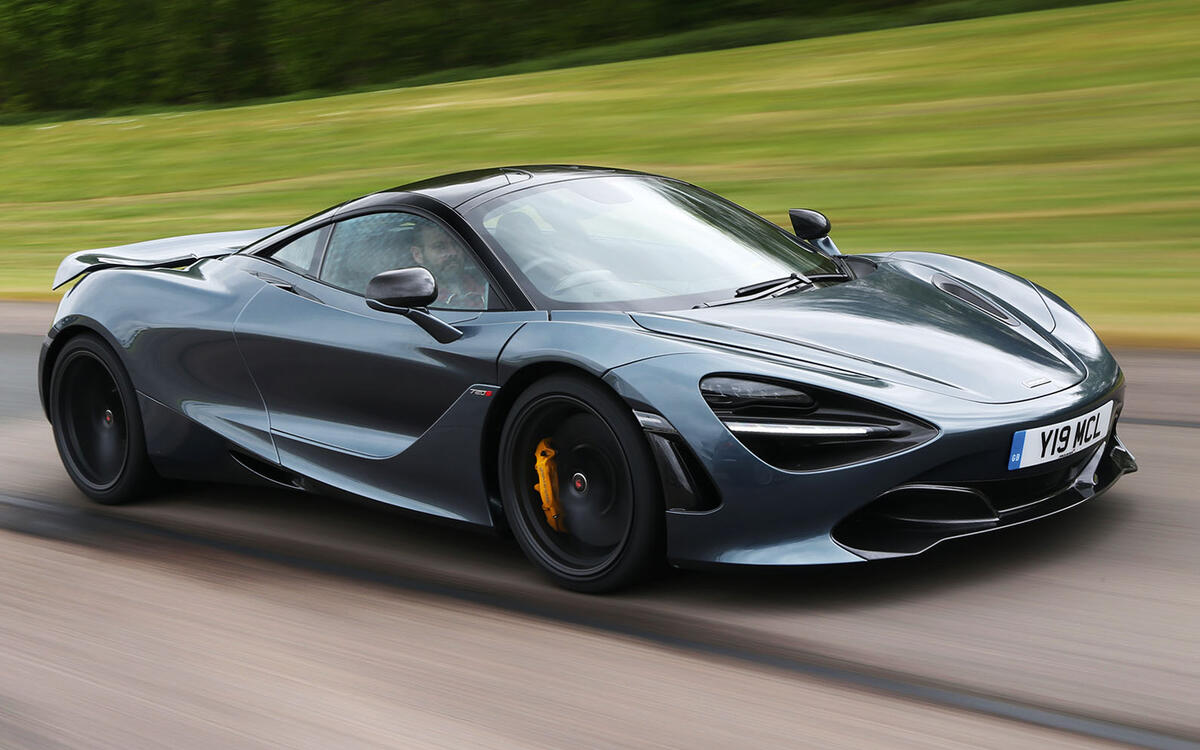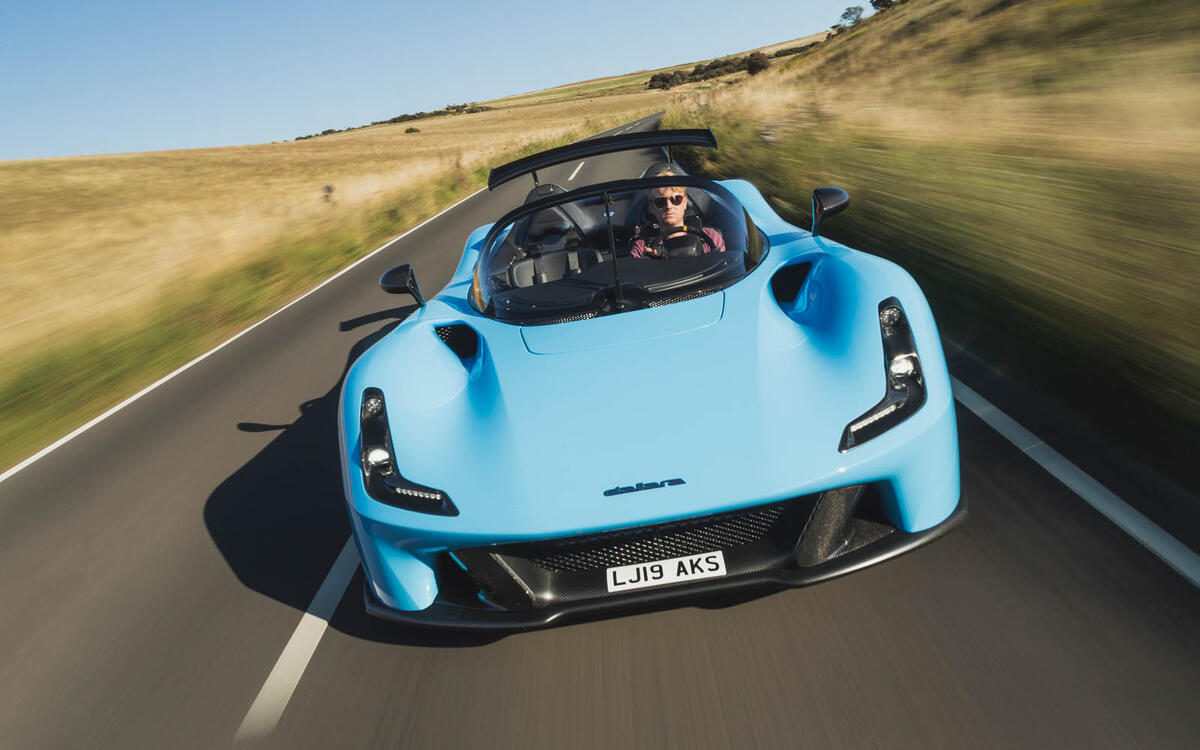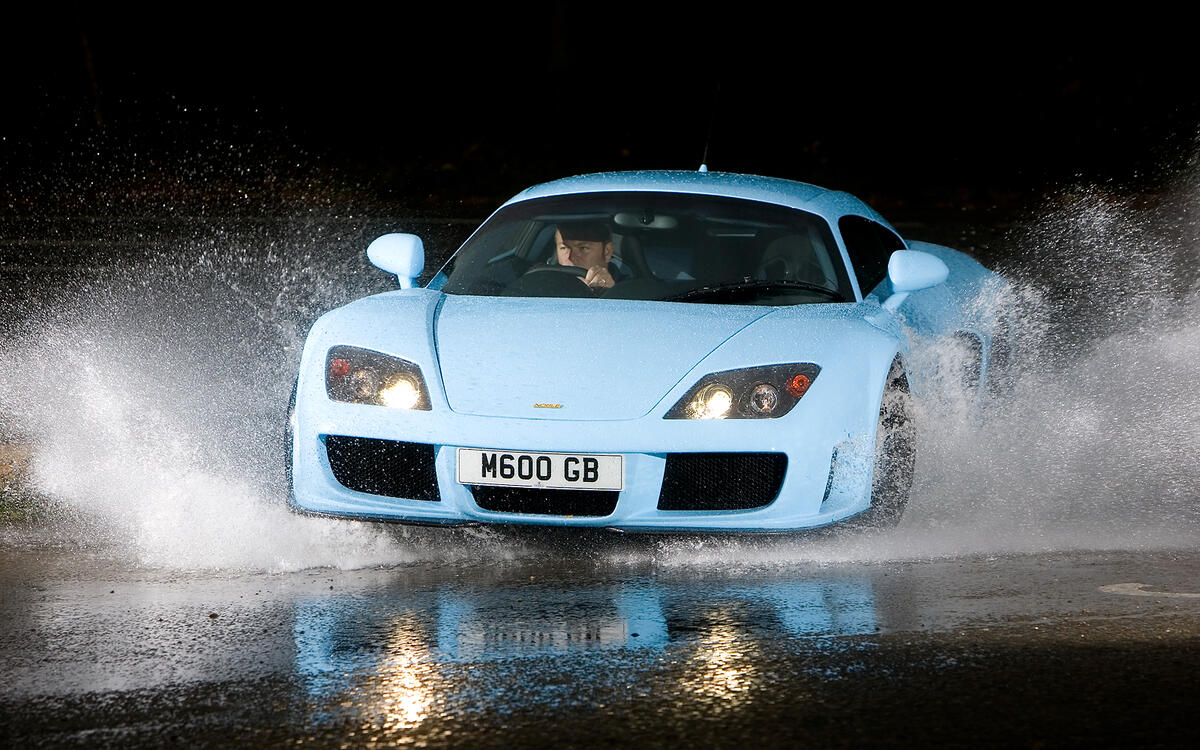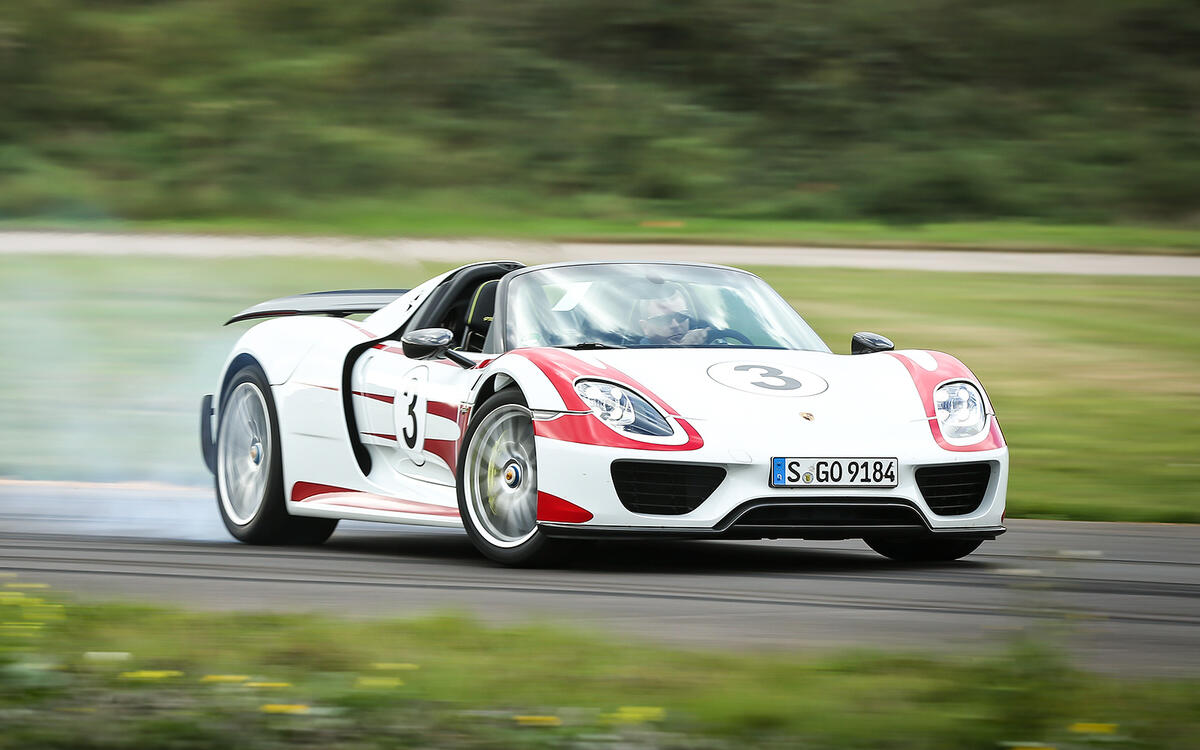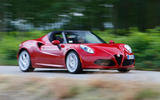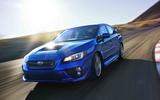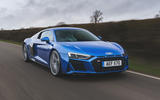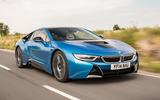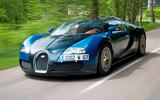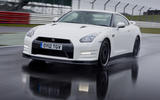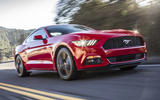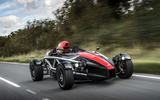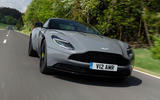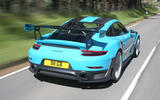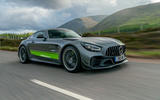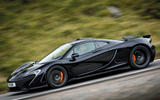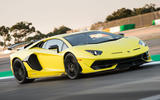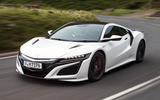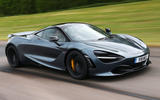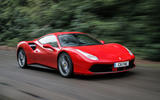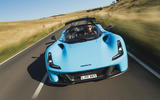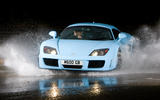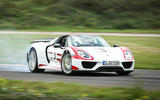 Slide of
Slide of
It’s all too easy to get caught up in how quick a car can accelerate, but it’s brakes that bring you safely back home.
Here are the best-stopping cars from 70mph, arranged in order from good to great. All figures are from Autocar’s detailed road tests and from 70mph to a stop in dry conditions:
 Slide of
Slide of
Alfa Romeo 4C (51.3m)
Rather than relying on huge discs or expensive composite materials for its brakes, the Alfa Romeo 4C preferred overall light weight to improve its braking performance. Tested in Spider form, it recorded a stopping distance of 51.3m from 70mph. Alfa Romeo claimed the Spider generated the same 1.25g of stopping force under maximum braking as the coupe model.
With 305mm front discs and 292mm rears made from steel, the Alfa’s set-up still benefitted from a bit of exoticism thanks to Brembo four-piston calipers all-round.
 Slide of
Slide of
Subaru WRX STi (50.6m)
Take the Subaru WRX STi’s braking distance in comparison to many supercars and it looks, well, a bit out of its depth. Then remember this is a five-seater that you can happily chuck the kids and dog into and it starts to look a darn sight more remarkable. Then again, Impreza’s have been doing that for a long time.
Hit the middle pedal hard at 70mph and the WRX STi needs 50.6m to stop. Given the Subaru cost a lot less new than supercars, you can also understand why it has steel discs rather than composite material items. The 326mm front discs are clamped by four-piston calipers, while the 316mm rear have simple two-piston calipers.
 Slide of
Slide of
Audi R8 V10 plus (47.4m)
Audi wasn’t messing about when it came up with the specification of the R8 V10 plus and they gave it carbon ceramic disc brakes as standard. These were an option for non-plus models, so no wonder the uprated R8 felt stronger when you pressed on the brake pedal. From 70, it came to a stop in 47.4m.
Anthracite grey calipers are a visual clue to the carbon ceramic brakes of the V10 plus. Peer further behind the wheels and you’ll find 380mm front discs and 356mm rears, while those calipers grip with six pistons at the front and four on the back rotors.
 Slide of
Slide of
BMW i8 (46.2m)
BMW made use of carbon fibre to keep the i8’s overall weight as low as possible to counteract its hybrid power plant. The result is a car that weighs 1485kg and stops from 70mph to a halt in 46.2m. Compared to many other supercars, this isn’t an especially short distance, though the BMW does come with regenerative braking to help recharge its battery as you slow.
Despite the carbon fibre tub, the i8 has steel brake discs and they come in 340mm sizes front and rear. This makes the i8 more affordable to buy and run, and it went on sale in the UK with a list price of £94,845 in 2014.
 Slide of
Slide of
Ferrari F430 (45.9m)
If you wanted the ultimate in stopping power when ordering a new Ferrari 430, you had to pay extra for the carbon ceramic discs. They were larger than the standard 330mm steel discs all-round, providing 380mm front and 350mm rear stoppers. Up front, there were six-piston calipers and four pistons per caliper at the back to halt the 430 from 70mph in 45.9m.
It’s a measure of how far brake technology has come in a relatively short period that what seemed sensational for the 430 is now beaten by more than 6.0m by the 488 GTB. Even so, the 430 was praised for its ceramic brakes when new for the consistency of their feel and ease of use on a road car, which was not always the case with early adopters to the ceramic cause.
 Slide of
Slide of
Bugatti Veyron (45.2m)
Given its massive performance and power, the Bugatti Veyron has brakes that are still within the realms of the relatively normal. Well, normal for supercars, anyway. What you get are 400mm carbon ceramic front discs and matching 380mm rears, which are not excessively large next to many others with much lower top speeds.
Where the Veyron pulls out its trump card is in the number of pistons that press the brake pads into the discs. Up front, you get eight-piston calipers, which is two more than most, while at the back there are six pistons per caliper. This is where the 1888kg hauls itself into the realms of greater braking cars and stops from 70mph in 45.2m.
 Slide of
Slide of
Nissan GT-R (45.0m)
The Nissan GT-R has always had the ability to amaze and it’s no different when it comes to how this great value supercar stops. It will come to a rest from 70mph in 45.0m, bettering a Bugatti Veyron, which is quite a feat for a car that weight 1752kg.
A set of Brembo calipers with six-piston design at the front and four-piston set-up at the back gives the GT-R a great base. They grip 390mm front and 380mm rear discs that combine to give the Nissan superb retardation. Even more creditable is the GT-R does this with steel rather than carbon ceramic discs as standard.
 Slide of
Slide of
Ford Mustang GT (44.5m)
For a big ol’ coupe, the 2015 Ford Mustang GT shows you don’t always need fancy tech to come to a stop in a hurry. This 1680kg V8 fastback with relatively small 352mm steel front discs and 330mm rears can bring itself to a stop from 70mph in 44.5m. That’s less distance needed by a Nissan GT-R.
Helping the Mustang GT to achieve this feat with what could be regarded as old tech are a set of Brembo-supplied six-piston front calipers to give plenty of bite at the front. Even more surprising given the excellent stopping performance of the Ford is it uses mere single-piston rear calipers.
 Slide of
Slide of
Ariel Atom 4 (44.1m)
There are plenty of exciting statistics with the Ariel Atom 4, not least 0-60mph in 2.8 seconds, a 595kg all-up weight and 320bhp turbocharged 2.0-litre engine. However, it also impresses with a braking performance of 44.1m from 70mph to a halt.
That lightness helps the Atom 4 a great deal in braking as it has less mass to deal with. It also means the Ariel can use smaller brake discs, so it comes with 278mm fronts and 253mm rears. In performance car terms, they are tiny and they’re gripped by only two-piston calipers, yet the Ariel offers superb retardation and feel helped by its Tilton aluminium pedal box.
 Slide of
Slide of
Aston Martin DB11 (43.6m)
With a twin-turbo 5.2-litre V12 engine and 630bhp, the Aston Martin DB11 is no laggard when it comes to performance. So, it also needs some big brakes to bring this 1870kg Brit to a stop and they come in the form of 400mm front discs and 360mm rears.
At the front, there are six-piston calipers and the rear is dealt with by a four-piston arrangement. Perhaps a little surprisingly given its competitor set, the Aston sticks with steel discs rather than carbon ceramic items. Even so, the DB11 comes to a stop from 70mph in a decently short 43.6m.
 Slide of
Slide of
Porsche 911 GT2 RS (42.0m)
There’s no mistaking the Porsche 911 GT2 RS’s motorsport lineage when it comes to its brakes. The ceramic discs have been developed from the race cars used in the Supercar series, so you have massive 410mm front discs and 390mm rears that anchor the GT2 from 70mph to a halt in 42.0m.
These brakes are easily spotted thanks to the yellow calipers lurking behind the alloy wheels and each front disc’s pads are clamped by six pistons. The rears have four piston calipers, while the use of cross-drilled ceramic discs all round saves around 50% of the weight compared to steel rotors.
 Slide of
Slide of
Mercedes-AMG GT R (41.4m)
When you have the power of a rampant AMG V8 to reign in, great brakes are every bit as essential as that motor’s potential. This is why the GT R comes with carbon ceramic discs that have been developed out of Mercedes-AMG’s motorsport knowledge and why the GT R can stop from 70mph in 41.4m.
As well as using compound material for the discs, those rotors measure 390mm up front and 360mm at the back. There are floating six-piston calipers at the front to grip the discs, while four-pot calipers do the work at the rear.
 Slide of
Slide of
McLaren P1 (40.9m)
It was a measure of McLaren’s intent for the P1 that it ignored road cars and looked to GT3 race cars for its braking performance. The result was a system developed with Japanese firm Akebono and resulted in 390mm front and 380mm rear discs. More pertinent was the material the brakes were made from, which could absorb 50% more heat than a 12C’s ceramic brakes to reduce stopping distances.
The result of this was a stop from 70mph in 40.9m. This was helped by the P1’s downforce that helped to push the tyres into the road at higher speeds and there was further aero assistance from the active rear spoiler. However, the added weight of the P1’s hybrid system means it doesn’t stop in quite as short a distance as the 720S.
 Slide of
Slide of
Lamborghini Aventador SVJ (40.8m)
Lamborghini didn’t see the need to increase the size or performance of the Aventador’s brakes when it introduced the 759bhp SVJ model. Little wonder when the ‘standard’ Aventador S already packed carbon ceramic discs in 400mm front and 380mm rear sizes.
During our test of the SVJ in 2019, it came to a stop from 70mph in 40.8m to put it among the very best of its contemporaries. For a car tipping the scales at 1525kg without fluids, that’s a mightily good figure and shows the Aventador still has plenty in it compared to lighter, more technically advanced rivals. It was also good enough to bag the SVJ a Nürburgring production car lap record in 6min 44.97sec.
 Slide of
Slide of
Honda NSX (40.7m)
For a car as technically advanced and sold on its innovation, it comes with a raised eyebrow the Honda NSX has plain old steel discs as standard. However, there is the option of carbon ceramic anchors and most customers opt for them. This is the set-up that resulted in a superb stopping distance of 40.7m from 70mph.
If you stick with the steel brake discs, they come with 370mm front rotors and 361mm items at the back. Tick the box for the ceramics and they stay the same size for the rear but grow 10mm to 380mm for the front pair. Either way, they’re gripped by six-piston calipers from Brembo to the fore of the cabin and four-piston units aft.
 Slide of
Slide of
McLaren 720S (39.9m)
It has become the norm for supercars in the upper echelons of the sector to come with carbon ceramic brakes as standard and the McLaren 720S is no different. There are 390mm discs up front and 380mm rears, with those to the front gripped by six-piston calipers and a four-piston set-up at the back. This stops the 720S from 70mph in 39.9m.
Even more impressive than the stopping distance and the fact you can order the calipers in seven different finishes is our test showed the 720S needs less distance to stop than the mighty P1. Stand on the anchors at the same time and the 720S uses 1.0m less distance to pull up than its even more expensive hybrid-powered sister.
 Slide of
Slide of
Ferrari 488 GTB (39.6m)
Ferrari claimed the 488 GTB improved stopping power by 9% over the previous 458 model. Going by the evidence of a stopping distance of 39.8m from 70mph to a complete halt, it seems entirely correct that such a big margin of improvement has been achieved.
At the core of the 488’s braking system are 398mm carbon ceramic front discs and 360mm rears. It’s a measure of how good this set-up is that Ferrari saw no need to change it when it introduced the Pista model to the 488 line-up.
 Slide of
Slide of
Dallara Stradale (39.4m)
When you have a car that is claimed to generate 2g of cornering force, you want to know it has the brakes to match. Luckily for Dallara Stradale customers, they get just that in the shape of anchors that can stop the car from 70mph in only 39.4m. That’s less distance than a McLaren 720S needs.
What’s surprising about the Stradale’s brakes is there’s nothing excessive about them. They are steel discs with a 305mm diameter at the front and four-piston calipers. Where the stunning stopping power comes from is the car’s feather light 885kg kerb weight, so there’s just no much mass to slow.
 Slide of
Slide of
Noble M600 (38.9m)
The Noble M600 is one of the best stopping cars we’ve ever tested and comes to a rest in just 38.9m from 70. That needs some very strong brakes and the 380mm front discs are worked on by six-piston calipers. There are also 350mm rear discs and four-piston calipers.
However, what makes the Noble such a great car for shedding speed in a hurry is its light weight. It only troubles the scales with 1198kg, so there’s just not as much of the M600 to slow as there is with many of its rivals.
 Slide of
Slide of
Porsche 918 Spyder (37.8m)
The Porsche 918 Spyder is a car that scrambles your understanding of how a car performs on many levels, not least in how it stops. It pulls up from 70mph in less distance than any of its direct or near rivals, needing just 37.8m to stop, which is the length of about three London buses.
Porsche fitted 410mm carbon ceramic front discs and 390mm rear items, with the fronts 4mm thicker than the 32mm wide rears for better heat dissipation. The 918’s brakes also serve as part of the hybrid regeneration system, capturing energy that would otherwise be lost to recharge the car’s battery for EV-only driving. The 918 Spyder is the fastest stopping car we’ve ever tested.
If you enjoyed this story, sign up to Autocar’s newsletter for all the best car news, reviews and opinion direct to your inbox. Click here to subscribe.
Many of us know what the world's fastest cars are, but do you know which ones stop the quickest too? Time to find out
Advertisement

